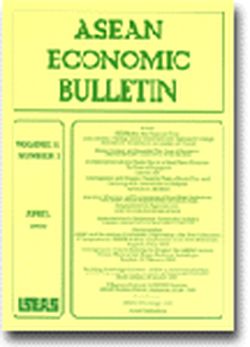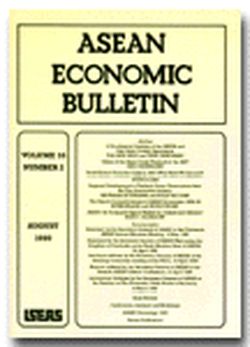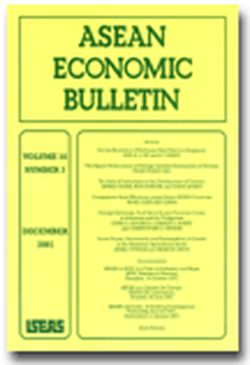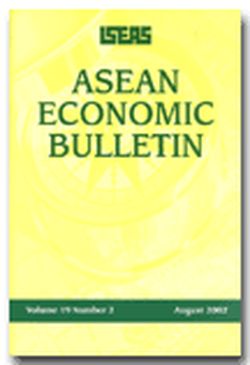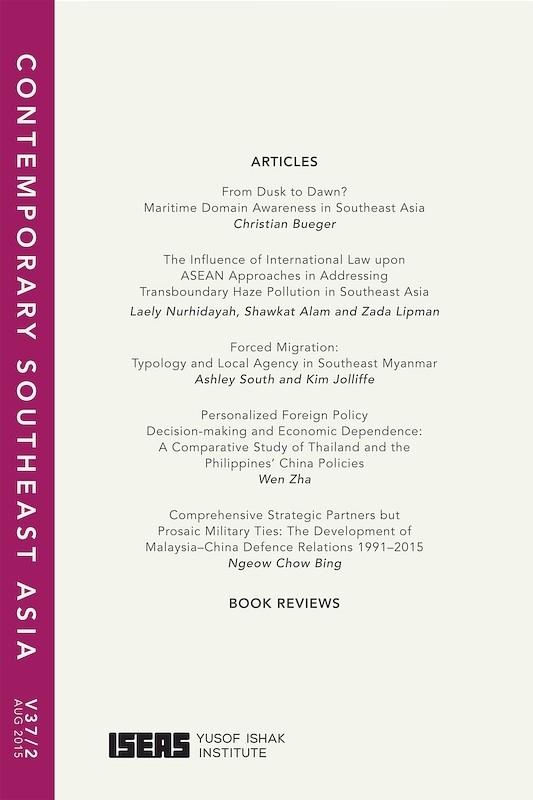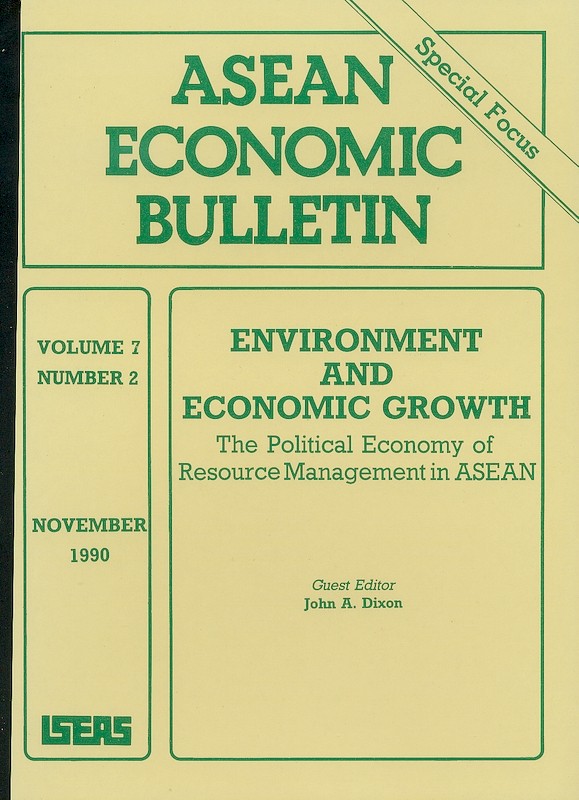ASEAN Economic Bulletin Vol. 18/2 (Aug 2001)
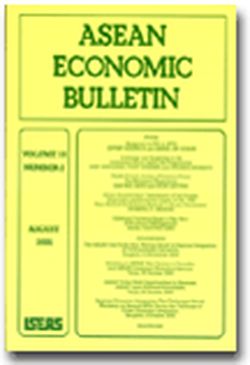
Date of publication:
August 2001
Number of pages:
109
Code:
AE18/2
Contents
-
Preliminary Pages
- ARTICLES
-
Prospects for FDI in AFTA, by Jeffery Heinrich, Denise Eby Konan, authors see abstract</center><strong>"Prospects for FDI in AFTA", by Jeffery Heinrich and Denise Eby Konan. <i>ASEAN Economic Bulletin</i>, vol. 18/2 (2001)</strong><br><br>A growing proportion of international trade within ASEAN occurs within multinational enterprises. This article reviews the present trade and foreign investment environment within ASEAN, and analyses the impact of an ASEAN Free Trade Agreement (AFTA) on foreign investment in the region. We anticipate that a reduction of regional trade barriers could make Southeast Asia a more attractive investment destination to both service ASEAN consumers, and integrate production processes within the region. Some indications about potential changes in the allocations of investment within the region are also provided.<br> <font face="Verdana" size=1>
-
Coverage and Targetting in the Indonesian Social Safety Net Programmes, by Asep Suryahadi, Yusuf Suharso, Sudarno Sumarto , authors see abstractThe social safety net programmes, which were created by the Government of Indonesia in early 1998, are intended to help protect both the traditionally poor and those who have become the newly poor -- due to the economic crisis -- in coping with the impacts of the crisis. The objectives of the programmes include: ensuring the availability of food at affordable prices, supplementing purchasing power through employment creation, and preserving access to critical social services, particularly health and education. The findings of this study indicate that in many cases the programmes have not reached the specified target groups due to low coverage and loose targetting. The effectiveness of the programmes varied across different programmes and regions. The general conclusion from this study points to the need for improvements in the implementation of the programmes, particularly in terms of targeting the beneficiaries of a particular programme and in raising coverage within the target groups.
-
Credit Crunch during a Currency Crisis: The Malaysian Experience, by Gan Wee Beng, Soon Lee Ying, authors see abstractThis article seeks to evaluate the extent to which the sharp decline in loans and advances in the Malaysian banking system during the recent currency crisis can be attributed to the 'credit crunch' phenomenon. The article identifies the factors that led to shifts in the supply of intermediate credit, and employs a market disequilibrium framework to quantify the extent of excess demand for loans. The empirical results identify the credit crunch period as the period from July 1997 to March 1998, while the decline in loans during the subsequent period was due to the decline in demand for credit as the economy slowed down.
-
Urban Householders' Assessment of the Causes, Responses, and Economic Impact of the 1998 Haze-Related Air Pollution Episode in Brunei Darussalam, by Kwabena A Anaman, author see abstractThis study was concerned with an assessment by urban householders of the causes, responses and the economic impact of the January to April 1998 haze-related air pollution episode in Brunei Darussalam (Brunei). It involved a sample survey of 102 householders in three randomly selected kampongs (villages) in Bandar Seri Begawan, the capital of Brunei. Respondents identified forest fires in the Kalimantan Region of Indonesia as the foremost cause of the 1998 haze-related air pollution. The most important response during the period of haze-related air pollution was listening to broadcasts and messages pertaining to the pollution on the Brunei Government Television and Radio. Willingness to pay (WTP) for haze-related information was shown to be positively related to family income. Retirees were prepared to pay less for haze information than younger people, while those with asthma were prepared to pay more than those without the disease. WTP to a Public Haze Fund to prevent the occurrence of extreme haze-related air pollution, as experienced in 1998, generated an average bid of B$178 per respondent. This WTP was also positively related to family income and negatively to the age group of respondents.
-
Optimum Currency Areas in East Asia: A Structural VAR Approach, by Hazel Yuen Phui Ling, author see abstractThis article empirically assesses the suitability of the East Asian economies for a regional monetary arrangement, on the basis of their symmetry in macroeconomic disturbances, as satisfying one of the preconditions for forming an Optimum Currency Area. Specifically, the Structural Vector Auto-regression (VAR) approach is considered in discovering the incidences of transitory and permanent shocks, as a tentative way of identifying potential candidates for monetary union. Owing to East Asia's differing economic circumstances and development, a practical approach towards regional monetary integration would be to begin with smaller sub-groupings. The preliminary findings of this study suggest that there exists scope among selected groups of East Asian economies for potential monetary integration. The implication is that smaller sub-groupings could eventually culminate in a single currency area, subject to the fulfillment of the necessary preconditions and harmonization requirements.
-
DOCUMENTATION: The ASEAN Free Trade Area: Moving Ahead on Regional Integration. Address by H.E. Rodolfo C. Severino, Secretary-General of the Association of Southeast Asian Nations at the AFTA Roundtable Discussion, Bangkok, 21 November 2000
-
DOCUMENTATION: Investing in ASEAN: New Factors To Consider. Statement by H.E. Rodolfo C. Severino, Secretary-General of the Association of Southeast Asian Nations at the Joint ASEAN Investment Promotion Seminar, Tokyo, 25 October 2000
-
DOCUMENTATION: ASEAN Today: New Opportunities for Business. Statement by H.E. Rodolfo C. Severino, Secretary-General of the Association of Southeast Asian Nations at the ASEANJapan Business Roundtable, Tokyo, 24 October 2000
-
DOCUMENTATION: Regional Economic Integration: The Challenges Ahead. Statement by H.E. Rodolfo C. Severino, Secretary-General of the Association of Southeast Asian Nations at the Workshop on Beyond AFTA: Facing the Challenge of Closer Economic Integration, Bangkok, 2 October 2000
-
BOOK REVIEW: Globalization and the Politics of Resistance, edited by Barry K Gills., by Bhubhindar Singh, author
-
BOOK REVIEW: Demystifying Globalization, edited by Colin Hay and David Marsh., by Tony Cavoli, author
-
BOOK REVIEW: Globalization and Its Discontents, edited by Stephen McBride and John Wiseman., by Peter W Preston , author
-
BOOK REVIEW: The Super-Rich: The Unjust World of Global Capitalism, by Stephen Haseler., by Anthony L Smith, author
-
BOOK REVIEW: Globalization of Japan: Japanese Sakoku Mentality and U.S. Efforts to Open Japan, by Mayumi Itoh., by Akihiko Kawaura, author
-
BOOK REVIEW: Toward a New Financial Architecture: A Practical Post-Asia Agenda, by Barry Eichengreen., by Jamus Jerome Lim, author
-
BOOK REVIEW: The Asian Financial Crisis and the Architecture of Global Finance, edited by Gregory Noble and John Ravenhill., by Tracy Yang Su-Chin, author
-
BOOK REVIEW: Price Interdependence Among Equity Markets in the Asia-Pacific Region: Focus on Australia and ASEAN, by Eduardo D. Roca., by Guan Hua Lim, author
-
BOOK REVIEW: New Multinational Enterprises From Korea and Taiwan: Beyond Export-Led Growth, by Roger van Hoesel., by Nick J Freeman, author
-
BOOK REVIEW: Managed in Hong Kong: Adaptive Systems, Entrepreneurship and Human Resources, edited by Chris Rowley and Robert Fitzgerald., by Jan Selmer, author

